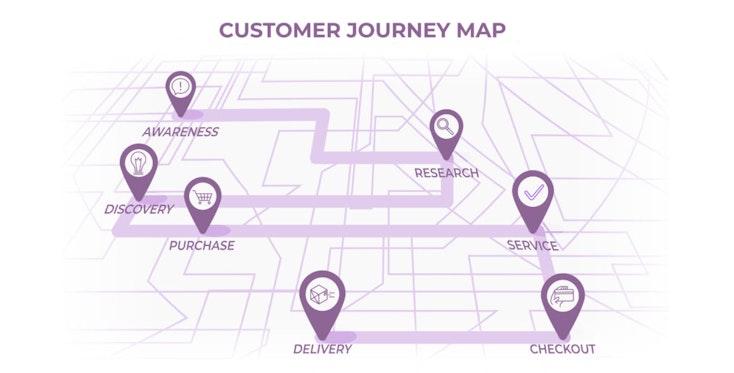A Facebook Ad Secret to Find Your "Next Ready to Buy" Customer

If you have been managing ads for your dealership on Facebook, Google, or other sites, you have likely heard the term "in-market buyers." However, the concept of targeting in-market buyers gets thrown around a lot, to the point where many advertisers are not really sure what this audience is and how it is defined. For example, is a consumer "in-market" if they intend to buy in the next 30 days or 90 days? What about the next year? Another common question is, "What actions define a consumer who is "in-market?" Is this based on online searches, visiting a dealership, paying off their current vehicle?
According to a recent Cox Automotive study, car buyers are spending less time shopping for a vehicle, so overall, they are spending fewer days "in-market." Car buyers are now spending an average of 96 days in-market. That provides a good frame of reference, but if you dig into the data available from Oracle or IHS Markit (Polk), you will see numerous options available when using in-market audiences for your Facebook Ads Campaigns. IHS Markit's in-market is broken down into the following:
- In-Market, within 0-6 months
- Future In-Market, within the next two years – which would be a very high funnel.
Oracle models out other time frames such as 30 days, 90 days, or 12 months. Understanding this data is the first step in deciding how to use them to optimize a strategy for Facebook Ads.
Where does in-market data come from?
IHS Markit data is pulled from multiple sources, beginning with state registration data from titles, which is then combined with OEM sales data, lease and loan data, and service transactions.
The data includes points such as New/Used, Year, Make, Model, Body Style, and Lease/Buy. When all of this data is collected over time, data companies can model owner purchase behavior to determine the likelihood of a purchase and around the issue of brand loyalty, which can be equally important for targeting.
What factors make someone in-market?

The profile of an in-market shopper is mostly based on past purchases, and in some cases combined with online search activity. For example, have you always bought a Ford? If so, how often? Maybe you have not always bought a Ford, but you always buy an SUV, and how often do you buy a new SUV? Do you buy New or Used? Do you purchase or lease?
All of this history paints a picture of each consumer and allows you to reach these various segments as an advertiser.
Does loyalty really matter?
Loyalty data presents an opportunity to refine your targeting. IHS Markit Loyalty audiences break out buyers into Loyalists, Super Loyalists, and Nomads, all pretty much just what they sound like.
It is essential to know what each loyalty audience represents. For example, according to IHS Markit, Super Loyalists are 72% brand loyal - challenging to convert in a conquest ad campaign and likely resulting in less effective use of your ad dollars.
If you want to target conquest brands, Nomads are the group you want to reach. A recent study by Wards Auto supports this showing that of car buyers who were replacing a prior vehicle, almost 70% switched brands from the car they owned before. Historical data also shows that Nomadic buyers are more likely to switch brands when times are tough and money is on the line. In those cases, price becomes an increasingly important factor, brand loyalty less so.
The art of matching an audience with an ad strategy
Running a Successful Facebook Ad campaign is similar to any other data drive marketing campaign, where you want to balance effectiveness with efficiency. This means not only targeting the right audiences but also suppressing the audiences least likely to respond.
Can a Super Loyalist be converted to another brand? Of course, but it is less likely to happen as opposed to converting a Nomad, so go with your best odds.
Before choosing your audience, decide on the strategy of your campaign. If you are promoting an incentive for all of your brands, then target by brand. If the incentive is for select models, target by model. 
IHS Markit has over 400 different in-market model-level audiences available, so this will be your most specific targeting option. With either of these strategies, you might also target Nomads of brands you want to conquest, as well as your own Nomads - they have bought your brand but are not loyal, so you need to "sell" them over and over again. Understanding your competition and how strong they are will help you determine whether conquesting other brands makes sense.
Is your brand offering stronger incentives right now, or if there is a competitor getting lots of bad reviews, could both be good opportunities to target their customers.
Whether to target in-market by brand, model, or body style will also be a function of your budget: a smaller budget needs a smaller audience and more precise targeting, so target by model, or brand. A larger budget allows for a larger audience, then broader in-market categories, such as Body Style or Luxury vehicle could be better options.
How do you know the audience is the right size?
For the best results with any campaign, your budget is the best factor determining the optimal audience size. If you create an audience too small for your budget, you will either not spend your budget, or you could get a very high frequency and waste ad dollars on unnecessary impressions.
On the other hand, an audience that is too large for the budget means frequency could be too low. Many people need to see an ad multiple times before they respond, so a good frequency goal would be three to four times. An audience that is too large also means you won't reach everyone and could represent a missed opportunity.
Using in-market and loyalty audiences allows you to refine your ad campaigns' targeting, to reach consumers most likely respond and eliminate the waste of prospects not likely to convert, giving you overall a better return on your ad spend.
Tags:

authored by
Brent Albrecht
Brent Albrecht is currently the Vice President of Business Development at Friendemic. Friendemic provides social media and online reputation services for clients and agencies across the globe. Specialties: Marketing Strategy, Product development and launch, Social Media Marketing, Business Development, Lead Generation, Sales Promotion, Digital Marketing, Database Marketing.
Get Curated Insights
Content worth the click
Related Articles












